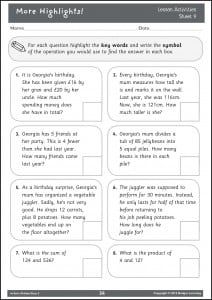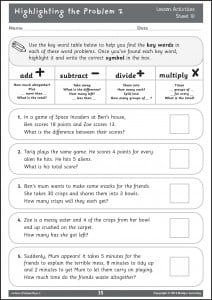What is the problem with problem solving
The theory behind problem solving in Maths lessons is twofold. First, so that pupils understand why Maths is fun and useful in the real world i.e. to solve problems. Secondly, to encourage pupils to apply the skills they’ve learnt to resolve various maths problems without necessarily telling them which skill to use.
This all sounds wonderful until you realise that the problems posed sometimes bear very little relationship to the real world – remember the question about two men filling a bath with water using two different size buckets as water leaked out through the plug hole?! I can’t say I’ve ever come across this in the ‘real world’ and I strongly suspect nor has anyone else. However, there are now lots of imaginative and inventive resources available that will both engage children and give them valuable practice at real world problem solving.
The second issue is perhaps more important and harder to resolve. If a child doesn’t have a firm understanding of mathematical concepts they simply can’t apply those concepts to solve problems. Memorising formulas or times tables without understanding the language of maths and its’ key concepts will ultimately only lead to children disliking Maths, however ‘fun’ the real world problem is.
Maths is a sequential subject where understanding is built on previously acquired knowledge. Therefore, it is important children have a firm understanding of the key concepts that underpin a mathematical topic, before moving on to work on other, more complex solutions. Taking time to ensure children understand the basics is vital to them being able to solve the problems set them in Maths lessons.
Problem Solving can be fun and real world scenarios are an important part of the Maths curriculum, however, without laying strong foundations, Problem Solving can end up being a mystifying and ultimately depressing experience for pupils.
Badger Learning’s We Have a Problem! series for KS2 is full of fun, imaginative problems for pupils to solve. However, unlike lots of similar resources this sequence of four Teacher books also contains lesson plans and easy-to-follow steps to guide pupils through to a solution.
Written by primary school teacher, Paul Wrangles, the core premise behind each activity and task is to adapt a pupils’ way of thinking so that they are able to identify Maths usage in real life.
Sample pages from the Year 3 Teacher book (click on each image to expand).
Written by Susan Ross, Publishing Director
- 2024
- 2023
- 2022
- 2021
- 2020
- 2019
- 2018
- 2017
- 2016
- 2015
- 2014
- 2013
- 2012


